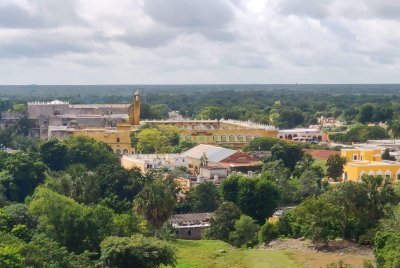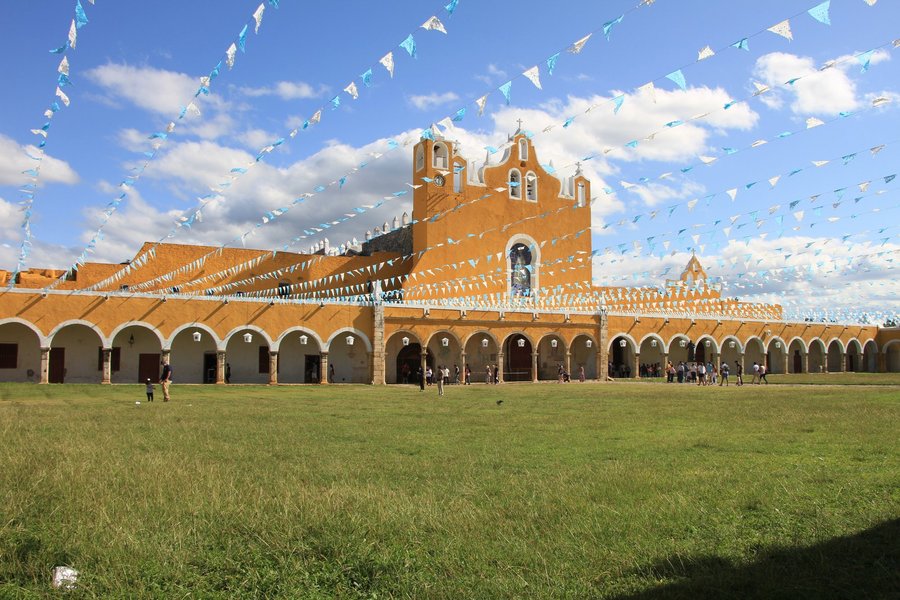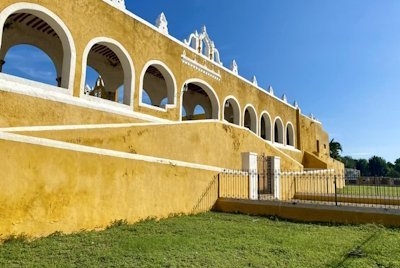Mexico
Historical city of Izamal
Izamal is an important Mayan urban centre dating from 600 to 800 B.C. on which a colonial city was built.
There are nearly 80 pre-Hispanic structures, including the pyramid of Kinich Kak Moo, the third largest in Mexico in terms of volume. The most famous colonial monument is the Franciscan convent of San Antonio de Padua. Izamal has maintained its political, economic and religious importance for the different peoples that have inhabited it since pre-Columbian times.
Site Info
Official Information
- Full Name
- Historical city of Izamal (Izamal, Mayan continuity in an Historical City) (ID: 5394)
- Country
- Mexico
- Status
-
On tentative list 2008
Site history
History of Historical city of Izamal
- 2008: Added to Tentative List
- Added to tentative list
- Type
- Cultural
- Criteria
Links
- UNESCO
- whc.unesco.org
All Links
UNESCO.org
- whc.unesco.org — whc.unesco.org
Community Information
- Community Category
- Archaeological site: Pre-Columbian
- Urban landscape: Colonial
Travel Information
Recent Connections
News
No news.
Recent Visitors
Visitors of Historical city of Izamal
- Alikander99
- Ana
- AYB
- Badwater
- basementonline
- Can SARICA
- Christravelblog
- Clyde
- Deffra
- Dennis Nicklaus
- Don Irwin
- edstar500
- Frederik Dawson
- GeorgeIng61
- H Beswick
- Jana and Matt
- Javier Coro
- Jean Lecaillon
- Jon Opol
- Kasper
- KentishTownRocks
- Kevin McFarland
- lichia
- Michael Ayers
- MMM
- Olli-Pekka Turunen
- Persian Globetrotter
- Philipp Peterer
- Randi Thomsen
- Roman Bruehwiler
- Sergio Arjona
- Shannon O'Donnell
- sncjob
- Stan
- stephanvermeulen
- Svein Elias
- Thomas Buechler
- Vanessa Buechler
- Van Hung
Community Reviews
Show full reviews
Izamal is worth a visit for two primary reasons: Kinich Kak Moo -- ruins of an enormous Maya pyramid, and the convent of San Antonio de Padua. It's otherwise a nice enough small city to stop by, and there are remants of a few other Maya structures scattered through the town center. We drove in, and guided by Google Maps to Kinich Kak Moo, started looking for a parking space. We were soon amazed to discover that the block we were driving around was the huge temple itself. It's base measures roughly 200 x 180 meters. It's not a full on pyramid going up from those dimensions now, but there is still a pretty significant temple in the center of the broad raised tableau that you can ascend.
The town's other main attraction, the convent, was finished in 1561. It is built on a terrace that was another former Maya pyramid that was flattened by the Spanish. It's very pleasant to walk around the huge atrium and the chapel is nice, but nothing really that ornate or special. The convent is now painted in the town's signature yellow color.
We also enjoyed walking around the town finding some of the other ruined Maya structures which are simply incorporated into the town. None of the Maya ruins here are anywhere near the caliber of other nearby major sites like Ek Balam, Uxmal, etc. But they are interesting to see for the way they are right in the middle of …
Keep reading 0 comments
Izamal means place of the Itza. According to Mayan mythology Votan sent his son Itzamna to bring civilization. On his death a pyramid and temple were built over his grave and he was worshiped as Itzamatul. It was after Chichen Itza, the greatest ceremonial center in Yucatan. Fray Diego de Landa arrived in the 16C and ordered the destruction of the pyramid and the construction of the Franciscan convent of San Antonio de Padua over the leveled remains the pyramid, as was typically done throughout Central and South America by the Spanish. The convent was built between 1549 and 1562. The enclosed atrium is the second largest after Saint Peters in the Vatican. The pyramid that was torn down must have rivaled the one in Uxma.
Izamal is the called the yellow city 'ciudad amarilla' as every building is painted yellow. It's a very pretty town and makes for a wonderful day trip from Merida by public bus. It is a local bus and so you must go to a different bus station than the one for the ADO busses. We had no problems. One can ask for directions at the hotel you are staying at.
We like to stay a week in one location and take day trips. Merida is fantastic for that. There are plenty of good hotels and restaurants. On Sunday the historical area is pedestrian only and there are vendors and musicians in the zocalo. In addition to Izamal one can get an excursion …
Keep reading 0 comments
